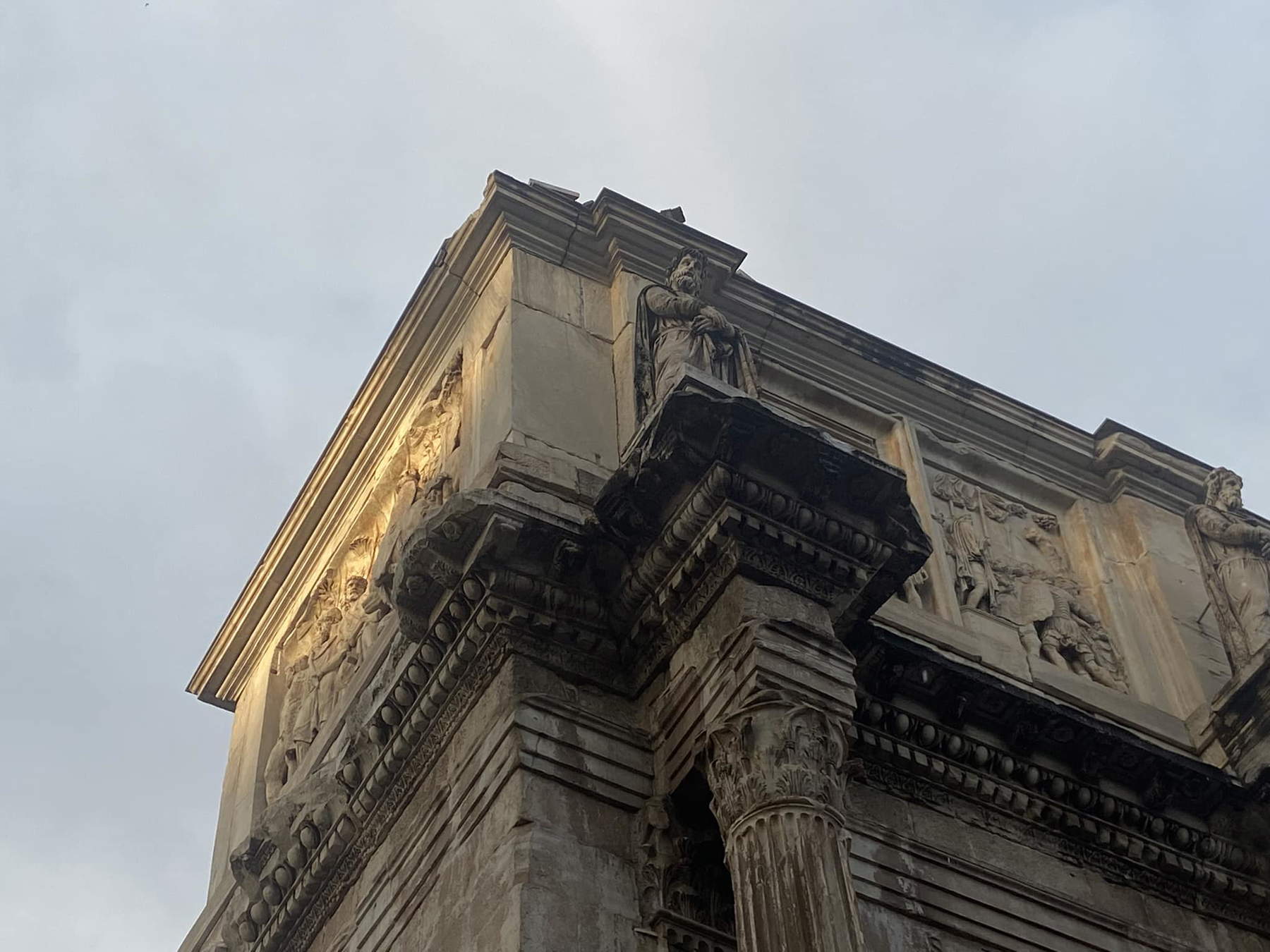The recent disturbances affecting Italy seem to give no respite. The strong wave of bad weather has hit several regions causing severe disruption in Rome where more than 80 millimeters of rain fell, an amount equivalent to the average for an entire autumn month. The phenomenon technically known as downburst is the same one that involved the Bayesian sailing ship in Palermo, whose sinking killed six people.
During the September 3 cloudburst, lightning struck the triumphal Arch of Constantine, a monument inaugurated in 315 A.D. byEmperor Constantine (Naissus, 274 - Nicomedia, 337) to commemorate his victory at the Battle of Ponte Milvio. The Arch of Constantine, over twenty meters high, is the largest of the three triumphal arches still standing in Rome. It is positioned near the Colosseum and stands along the route of the ancient city’s triumphal processions. Lightning struck the south side of the monument, damaging the top of the cornice. The impact caused two large fragments of fourth-century AD travertine to break off and fall from a height of about thirty meters. One of the fragments, about twenty centimeters, fell over the surrounding gate, while the other crashed at the foot of the Arch along with small debris. A few days earlier, moreover, a restoration site had been started on the south front of the Arch. At the time of the accident, civil defense was already engaged in extinguishing some fires that had broken out shortly before the storm. Later, Rome Mayor Roberto Gualtieri convened a coordination meeting on Capitol Hill to deal with the emergency. Colosseum Archaeological Park director Alfonsina Russo, who is currently out of the country, remained in contact with her staff to monitor the situation.
More than a hundred interventions were carried out by the patrols of Rome’s local police, to which were added numerous operations by firefighters especially in the eastern quadrant of the city and in the center. In addition to this, the disturbance that hit the capital caused strong wind currents causing significant damage and inconvenience. Metro Line A stops Lepanto and Manzoni were closed for over an hour due to flooding. Interventions included removal of fallen trees and branches and rescue in flooded basements and stores. In addition, the scaffolding of a grandstand inside the Circus Maximus partially collapsed.
“The two very large fragments that came loose have been collected and sheltered in our warehouses. Early tomorrow morning, before the opening of the Colosseum, we will make an inspection in order to immediately define the interventions to secure them,” the Colosseum Archaeological Park announced yesterday. “The recovery intervention carried out by the technicians was timely. Our officials arrived on site immediately after the lightning strike. All the fragments were recovered and placed in safety. Damage assessments have already begun and analysis will continue in the morning tomorrow. This is the first time the Arch has been struck by lightning. It was probably a fatality. Also because the monument is constantly being monitored. We feel it is important to point out that just two days ago the restoration work on the south front of the Arch of Constantine had begun, so we can confirm that this is a case of combining planned maintenance (relative to the already planned restoration) and promptly executed emergency protection.”
“The power of the disturbance was sudden and was not foreseen by any weather report,” says Sabrina Alfonsi, the Capitol’s Councillor for the Environment.
 |
| Rome, the Arch of Constantine was damaged by lightning |
Warning: the translation into English of the original Italian article was created using automatic tools. We undertake to review all articles, but we do not guarantee the total absence of inaccuracies in the translation due to the program. You can find the original by clicking on the ITA button. If you find any mistake,please contact us.